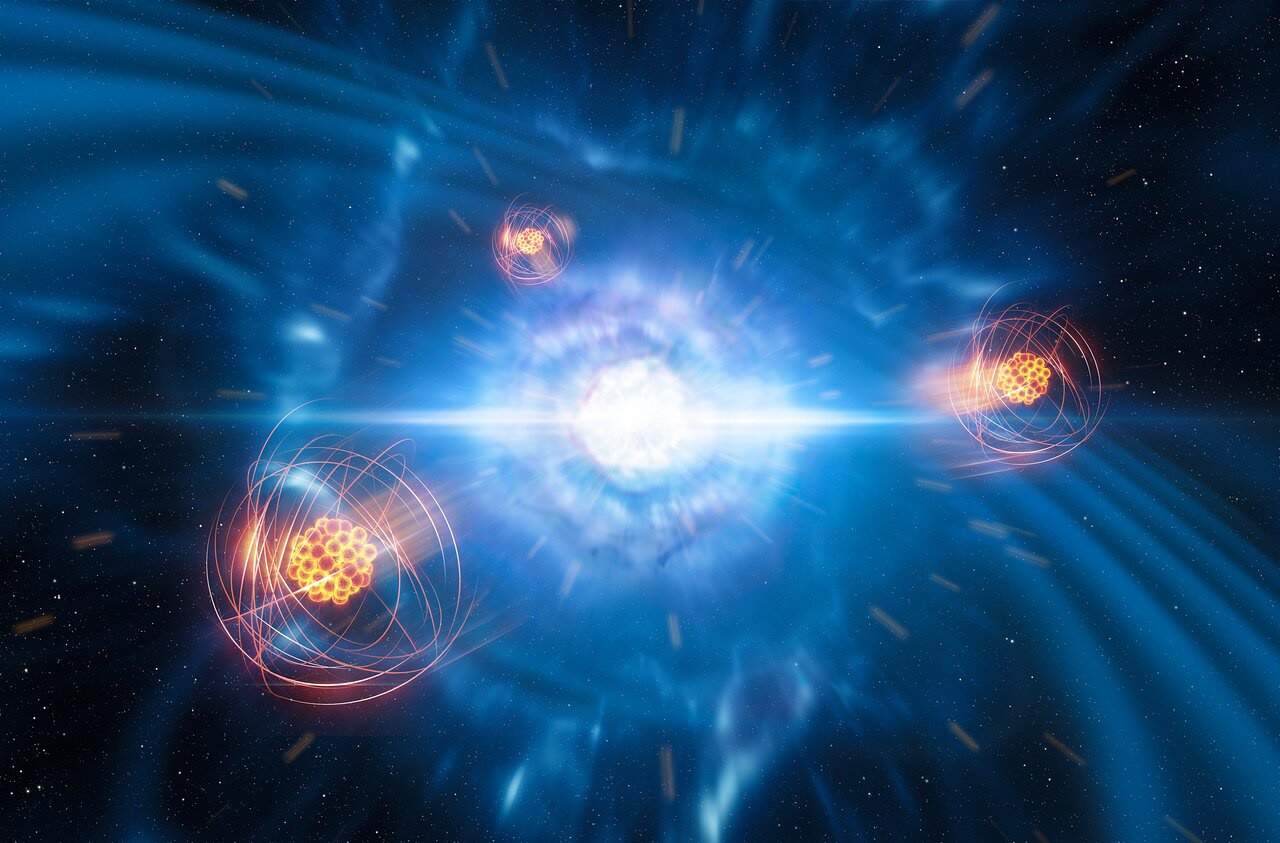Neutron-rich tantalum offers a view of how heavy elements are forged
01 Dec 2020
A beam of neutron-rich tantalum ions has been created for the first time by an international team of physicists working at RIKEN’s KEK Isotope Separation Facility (KISS) in Japan. The feat was achieved by Philip Walker at the University of Surrey and colleagues, who used state-of-the-art isotope separation techniques to isolate and study the ions. Their research could soon shed new light on how nuclear processes in dying stars create the heavy elements we observe in the universe today.
Rapid neutron capture, also known as the “r-process”, is a series of nuclear reactions that astrophysicists believe is responsible for about half of the elements heavier than iron in the universe. The process is thought to occur in core-collapse supernovae and neutron-star mergers. It involves the successive capture of neutrons by nuclei to create neutron-rich isotopes that eventually become stable heavy nuclei.
To gain a better understanding of the r-process, physicists study short-lived, neutron-rich nuclei that are made in accelerators. Neutron-rich tantalum nuclei are of particular interest because they could offer a way of studying what happens when a nucleus acquires 126 neutrons, where a neutron shell should close and the r-process should come to a temporary halt.
Array of detectors
In this latest study, researchers were able to isolate and study tantalum-187 nuclei, which have 114 neutrons and 73 protons. The isotope was created by firing xenon ions into a tungsten target. The collision products are then stopped in high-pressure argon gas and a tuneable laser is used to ionize the tantalum. The tantalum ions are then extracted and isolated in a beam that transports the ions to an array of detectors to study the radiation emitted when the nuclei undergo radioactive decay.
The collision process can create tantalum nuclei in high angular momentum states (called isomers) and Walker and colleagues focussed on one such isomer. By looking at the radiation given off when the isomer decayed to the ground state of tantalum-187 they found that the rapidly rotating nucleus adopted both prolate (American football shaped) and oblate (squashed sphere) structures.READ MORE

The team say that its results clearly show that the KISS instrument can measure the properties of heavy, neutron-rich nuclei. In future studies, they will now aim to investigate how the addition of more neutrons could tip the shapes of tantalum nuclei into the fully oblate.
They also hope to study tantalum-199, which is expected to have a closed neutron shell that would temporarily halt the r-process. If this could be achieved, the reward would be new insights into how heavy elements are forged in supernovae and other violent astrophysical events. “It now seems to be a real possibility to go further and reach uncharted tantalum-199, with 126 neutrons, to test the exploding-star mechanism,” says Walker.
The research is described in Physical Review Letters.
FROM PHYSICSWORLD.COM 16/12/2020

Δεν υπάρχουν σχόλια:
Δημοσίευση σχολίου